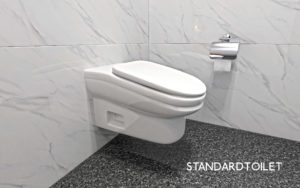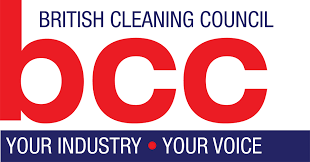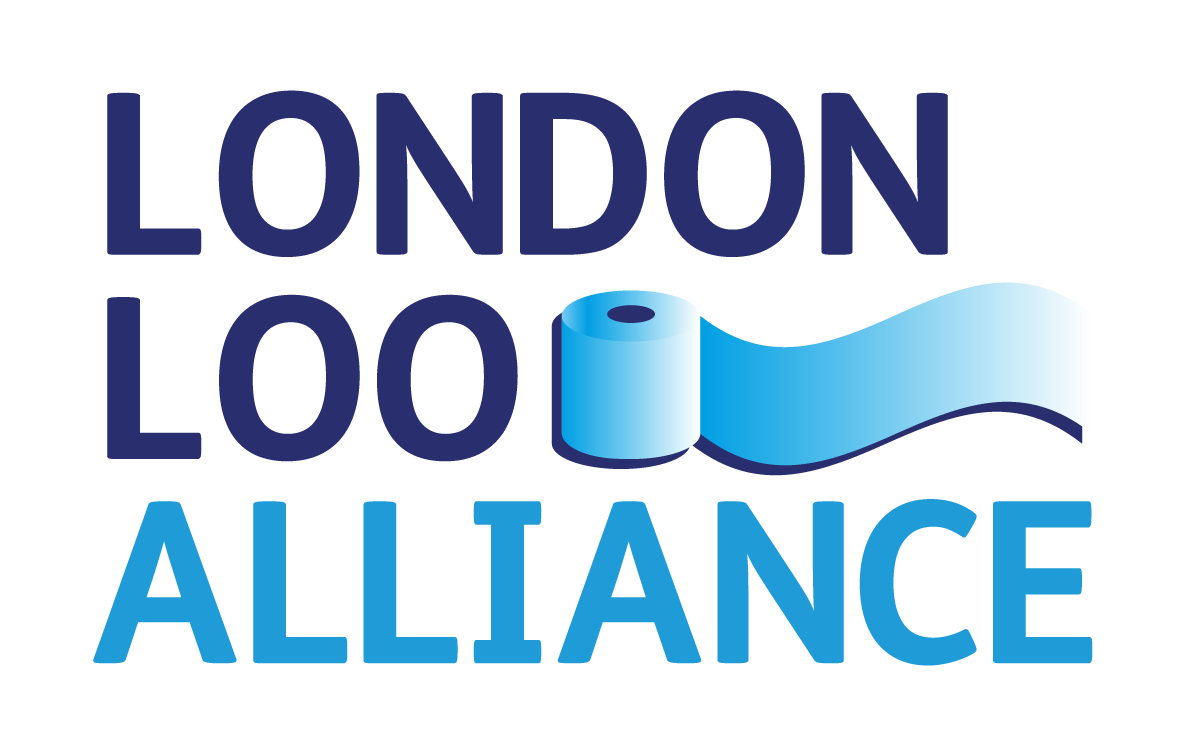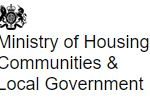Category Archives: Uncategorized
Coronavirus (Covid-19) England

Since the arrival of this pandemic it has become extremely clear that each and everyone of us has to adhere to an increased level of personal hygiene. Regular hand washing and the repeated use of anti-bacterial wipes on the surfaces we come into contact with are essential precautions to avoid the spread of this deadly threat.
As the Lockdown eases and we venture back into society or return to our places of work we face the added strain of cross contamination and potential transmission of this virus to colleagues and friends. So we are looking for guidance from the devolved administrations to help us all act and behave in a responsible way to avoid touching contaminated surfaces or leaving traces behind that could be harmful to others.
Publicly Accessible Toilets are a vital piece of our everyday lives and these essential facilities help us to stay comfortable and relieved when we travel away from our homes or places of residence. The government has clearly advised us all to WASH your HANDS reguarly and thoroughly for a least 20 seconds after coming in contact with any area or surface that might host the virus. So PC’s are an absolutely vital piece of infrastructure in our fight against Covid19 and these units must be opened and maintained to the highest levels of hygiene and cleanliness to serve the rising needs.
Unfortunately, many public and retail units remain closed dur to the severe lack of CLEAR & CONCISE guidance from government and the fear of the providers and sppliers that they are effectively combating the viral threat.
NEW GUIDANCE RELEASED
In the last fe days we have received a set of guidance outlines from the English, Scottish and Welsh governments towards getting Public Toilets reopened and fit for public use. The LINKS below will take you directly to this advice and should allow you to make most of the daily routines and decisions around opening these essential facilities.
However, please remember that Covid19 only arrived some 3 5 months ago and much is still unknown about the DWELL times and EFFECTIVENESS of many substances and procedures in removing or killing this viral threat. We have offered our thoughts and understandings below – but you mmust be guided by the governments direct Coronavirus briefings and the special Scientific Advisors who are working tirelessly on your behalf to find the most effective controls and remedial work to attack and neutralise all aspects of this threat to our very existance.
Guidance on Opening Pubic Toilets
from Simon Clarke MP Minister for Regional Growth and Local Government
and Rebecca Pow MP Minister for the Environment
Public toilets, portable toilets and toilets inside premises should be kept open and carefully managed to reduce the risk of transmission of COVID-19. Steps that will usually be needed:
- Using signs and posters to build awareness of good handwashing technique, the need to increase handwashing frequency and to avoid touching your face, and to cough or sneeze into a tissue which is binned safely, or into your arm if a tissue is not available.
- Consider the use of social distancing marking in areas where queues normally form, and the adoption of a limited entry approach, with one in, one out (whilst avoiding the creation of additional bottlenecks).
- To enable good hand hygiene consider making hand sanitiser available on entry to toilets where safe and practical, and ensure suitable handwashing facilities including running water and liquid soap and suitable options for drying (either paper towels or hand driers) are available.
- Setting clear use and cleaning guidance for toilets, with increased frequency of cleaning in line with usage. Use normal cleaning products, paying attention to frequently hand touched surfaces, and consider use of disposable cloths or paper roll to clean all hard surfaces.
- Keep the facilities well ventilated, for example by fixing doors open where appropriate.
- Special care should be taken for cleaning of portable toilets and larger toilet blocks.
- Putting up a visible cleaning schedule can keep it up to date and visible.
- Providing more waste facilities and more frequent rubbish collection.
The above shows the complete lack of understanding of the myriad of issues surrounding the reopening of public toilets and the problems and fear that these providers are facing in allowing large numbers of persons into their premises to use these facilities. They give no guidance to cleaning regimes or materials, chemicals, processes or clinicaL RESEACH that would provide reasonable guidance and understanding that the correct procedures were being observed and carried out.
We suggest that you read and digest the more concise guidance that is being proffered by the Scottish and Welsh governments which goes into a more clear description of processes – but may still lack the clinical details that many are seeking. The BTA guidance that follows tries to give some additional information on cleaning methodlogy and processes and offers advice that suppliers and providers might use to seek professional help from outside professional sources – such as HSE or Dept of Health or Public Health.

Additional Guidance on deep-cleaning is given from our colleagues at the Health & Safety Executive (HSE) on the use of various mist, fogging and UV sysytems. All is contained within a further POST on this site or please follow the LINK directly to the HSE website,
Coronavirus (Covid-19) Wales
Since the arrival of this pandemic it has become extremely clear that each and everyone of us has to adhere to an increased level of personal hygiene. Regular hand washing and the repeated use of anti-bacterial wipes on the surfaces we come into contact with are essential precautions to avoid the spread of this deadly threat.
As the Lockdown eases and we venture back into society or return to our places of work we face the added strain of cross contamination and potential transmission of this virus to colleagues and friends. So we are looking for guidance from the devolved administrations to help us all act and behave in a responsible way to avoid touching contaminated surfaces or leaving traces behind that could be harmful to others.
Publicly Accessible Toilets are a vital piece of our everyday lives and these essential facilities help us to stay comfortable and relieved when we travel away from our homes or places of residence. The government has clearly advised us all to WASH your HANDS reguarly and thoroughly for a least 20 seconds after coming in contact with any area or surface that might host the virus. So PC’s are an absolutely vital piece of infrastructure in our fight against Covid19 and these units must be opened and maintained to the highest levels of hygiene and cleanliness to serve the rising needs.
Unfortunately, many public and retail units remain closed dur to the severe lack of CLEAR & CONCISE guidance from government and the fear of the providers and sppliers that they are effectively combating the viral threat.
NEW GUIDANCE RELEASED
This guidance is primarily for owners and operators of toilets for public use in Wales
- Local Authorities, town councils and town/city centre managers/forums
- Town and Community Councils
- National Parks
- Third sector organisations
- Heritage and tourism sites
- Commercial or business premises where toilet access is provided to the public
- Hospitality sector (e.g. cafés, bars, restaurants)
Where sector specific guidance is also available it should be considered alongside this.
Purpose and scope of this guidance
The Health Protection (Coronavirus Restrictions) (Wales) Regulations 2020 (as amended) have been made for the purpose of preventing, protecting against, controlling or providing a public health response to the spread of Coronavirus and contamination in Wales. The Regulations currently require certain premises and businesses to close, whilst imposing restrictions on certain businesses or services (including ‘public toilets’) allowing them to remain open providing that those responsible take all reasonable measures to ensure that specific physical distancing requirements are maintained. Persons responsible for work carried out on certain premises are also under a duty to take all reasonable measures to ensure that a distance of 2 metres is maintained between persons on the premises. Those subject to a requirement to take all reasonable measures must have regard to guidance from the Welsh Ministers about taking those measures. These Regulations are regularly reviewed in accordance with Regulation 3.
This guidance focuses on the safer management of toilets for public use in the context of the Coronavirus pandemic and in compliance with the Coronavirus Restrictions Regulations. It is intended to help the owners and operators of toilets for public use to plan for the safer management of toilets as the restrictions in Wales are lifted and to plan for the re-opening of toilets where they have been closed.
This guidance provides a framework for identifying the issues associated with the use of toilets for public use in light of the need for social distancing and cleaning/disinfecting to minimise the transmission of the virus.
This guidance sets out additional principles that owners and operators of toilets for public use will need to consider. It does not replace any existing health, hygiene, risk assessment or other requirements for the normal safe management of toilets for public use.
Responsibility in Wales for opening / managing toilets for public use rests with the toilet owner or operator. For some assets, the local authority may be the owner but responsibility for the operation and maintenance rests with some town or community councils under a lease agreement as part of asset transfer agreements.
Under the Public Health (Wales) Act 2017, there is a duty placed on local authorities to have a local toilet strategy and statutory guidance has been provided. Under part 8 of the Public Health (Wales) Act 2017, local authorities may provide toilets in its area for public use.
This guidance does not alter those duties and powers, it merely provides advice and principles owners / operators may want to consider.This publication has been prepared by the Welsh Government, developed with advice from technical experts and from local authorities. This guidance applies in Wales only and does not impose any legal obligations.
Public health is devolved in Scotland, Wales and Northern Ireland. For advice in other parts of the UK please see guidance prepared by the Northern Ireland Executive, the Scottish Government and, for England, the UK Government (Ministry for Housing, Communities and Local Government). We expect this document will be updated over time – this version is up to date as of 2 July 2020. You can check for updates on the Welsh Government website.
If you have any feedback regarding the content of this document and inform future guidance, please email saferplaces@gov.wales. This guidance is part of a wider set of documents produced by the Welsh Government about safer public places and related issues. All Welsh Government guidance can be found on the Welsh Government website.
What this guidance contains
The guidance contains principles and steps owners and operators of toilets for public use should consider in planning the reopening (where toilets have been closed) and management of toilets as safely as possible. It does not replace the need for owners and operators to carry out their own risk assessments or follow normal toilet cleaning and management practices.
Existing Public Health Wales and Welsh Government guidance covers the principles of how to manage toilets from a health and hygiene perspective, including the re-opening of schools and other educational settings, managing Safer Public Places and workplace guidance. What this guidance does is bring together those health and hygiene principles in one place, and also consider the issues particular to toilets for public use around public access and communications. See Further information for links to the related guidance.
The importance of re-opening toilet facilities
Toilet accessibility is a key factor in easing restrictions and restoring confidence, once it is safe to do so. Many publically accessible toilets have closed in the response to the pandemic, which has helped encourage people to stay local. Toilet access is essential for many people including the elderly, those classed as disabled, those who are pregnant, those with young children, or those with medical conditions. Consideration should be given to the equality implications of those with particular health needs who need to use the toilet more often. Equality Impact Assessments should be reviewed as part of the planning for re-opening toilets. A lack of toilets can result in anti-social behaviour.
As the coronavirus restrictions are lifted the increasing number of local people and tourists is likely to place pressure on services including toilets for public use. Toilets are currently in the ‘high priority but high anxiety’ area for the public – half will not visit an attraction at all if toilets are closed. Assurance of safety measures are hugely important in building confidence in their use, and toilet information is key for pre-visit communication. Many people feel they cannot leave their homes for shopping or other day to day tasks if they do not know that a toilet is available.
The challenges of re-opening toilet facilities
Toilets are potentially a risk for transmission of the virus if not managed well. Toilets for public use vary hugely, from isolated rural facilities to small community facilities to large blocks in city centres. Some toilets for public use are located in hospitality / tourism and other public and commercial facilities etc. Toilets are usually relatively enclosed indoor spaces and are often unsupervised. The virus is unstable and does not transmit as easily in outdoor environments and is rapidly inactivated by heat and sunlight. Indoors the virus is likely to survive for longer.
Social distancing and hygiene
Current guidance issued by the Welsh Government focuses on the key messages to keep Wales safe by:
- always observing social distancing (also known as physical distancing) – stay 2 metres (3 steps) away from others (outside your immediate household), indoors and outdoors;
- wash your hands regularly;
- if you are meeting one other household, stay outdoors;
Read Welsh Government social distancing guidance.
Enhanced cleaning and disinfection practices should be followed.
Read public health guidance on cleaning and disinfection in non-healthcare settings.
In Wales there is no legal or mandatory requirement for people to wear face coverings in public.
Good practice steps to consider
Consideration should be given to the sections below taking into account local conditions, location, size, usage of toilet etc. Risk assessments should be undertaken by owners / operators before opening any toilet, and then kept under review. Risks assessments must include consideration of staff safety and any additional workforce impacts in managing and cleaning toilets. These points are over and above all normal toilet management requirements.
Hygiene – cleaning and handwashing
- Frequent enhanced cleaning and disinfection regime adhering to guidance particularly of points that are regularly touched. Frequency will be determined by owners / operators risk assessment based on likely volume of use.
- Frequent collection of paper towel and other waste.
- Minimising use of portable toilets (non mains sewage/proximity of waste/enclosed space) whilst acknowledging that at some sites it may temporarily be the only option (i.e. while other facilities remain closed).
- Using signs and messages to build awareness of good handwashing technique and other respiratory hygiene behaviours, e.g. around coughing and sneezing in public places.
- Best practice handwashing information and facilities should be provided
- Where possible, providing disposable hand towels as an alternative to hand dryers in handwashing facilities.
- Where appropriate, sufficient and accessible provision of automated hand sanitising dispensers.
- Regular checking of facilities and measures including recording of checks.
See Further information for guidance on cleaning and disinfection in non-healthcare settings.
Social distancing
- Clear signage should be provided on the requirement to maintain a 2m distance from others (outside of your immediate household).
- Measures to limit the number of users at any one time, perhaps a one in one out system, either self-regulated with clear signage, or overseen by an attendant.
- Removing access, for example to every other urinal or hand basin through use of tape or signage or other mechanism.
- Clear markings for distancing and queuing.
- Where possible doors to toilet blocks may be wedged open to maximise fresh air, to allow users to assess numbers inside, and to limit hand contact.
Communication
Toilet signage
Clear bilingual signage with simple messages should be used:
- Do not use toilets for public use if you have symptoms of COVID-19
(stay home, self-isolate, seek a test) - Use them, wash your hands and leave promptly.
- Avoid unnecessary touching of internal surfaces, fixtures and fittings.
- Keep a 2m distance from others outside your own household – observe social distancing and hand hygiene guidance at all times.
- Queue outside not inside the toilets.
- Where provided – use hand sanitiser before entering and after leaving.
- Guides to good handwashing and around coughing and sneezing in public places.
- Telephone number if any cleanliness or stock issues.
Information Campaigns
Consider publically available information / publicity on:
- Toilet opening and cleaning protocols so people can plan trips and to help restore confidence.
- Reinforcing the responsibility of members of the public to follow the rules on social distancing and hygiene.
Consideration of all user groups
- Equality Impact Assessments should be reviewed to ensure that the way rules are implemented do not have a disproportionate, negative impact on those who share protected characteristics. Particular consideration should be given to those who are visually impaired in terms of signage and communication.
- Consideration should be given to opening Changing Places toilets as a priority.
- Larger toilets or those in busier areas may require supervision, at least in the initial stages, to ensure public are adhering to social distancing and to restrict the number of people using the facility.
- In some locations toilets are looked after by volunteers many of whom will be in the at risk or extremely vulnerable (shielding) categories so alternatives may need to be found.
- Training of any personnel involved in delivering the measures will be key to ensure they understand and can communicate local guidance effectively and positively.
- Where a decision is made not to open a toilet for public use (particularly baby change facilities, toilets for the disabled or Changing Places) an Equality Impact Assessment should be undertaken to assess impacts on accessibility to all sectors of the community.
Queuing
- Defined areas and clear signage to indicate where pedestrians should stand when queuing using spray markings or temporary barriers.
- Management of multiple queues for different entrances through clear signage and the use of stewards as appropriate.
- “Do not join the queue, come back in xxx minutes” signs provided at popular destinations, when capacity reached.
- Alternative provision and / or seating for people who are unable to stand for long periods.
- Protection of queues through physical security measures / street furniture.
Coronavirus (Covid-19) Scottish Guidance

The opening of public toilets carries with it a risk of transmission of COVID-19 given the low levels of natural light, lack of ventilation, many surfaces to touch and the purpose of a toilet. Therefore, there is a need for careful consideration of how public toilets can be opened as safely as possible.
Safe opening will vary according to specific sectors and should align to the
guidance provided by those sectors in terms of restart. Assurance that adequate
sanitary facilities can be provided where appropriate is integral to the
restart process.
Public toilets are defined as any toilets accessible to the public. The opening of toilets should be accompanied by local risk assessment, and control measures should be proactively monitored by operators. Most premises should have a norovirus policy that can be adapted for use in cleaning facilities if an individual with COVID-19 symptoms is known to have used the facilities.
Risk assessment should specifically include:
- remote/unmonitored facilities for which there may be increased demand as travel restrictions are eased and people start travelling greater distances
- janitorial
staff for whom operators should already have procedures/PPE in place
Any
modifications or changes must take existing regulations into account.
Regulations on the provision of public toilets are governed by a number of
British Standards developed by the British Standards Institution (BSI). The key
standards which apply to the provision of public toilets are BS 6465 parts 1-4
and BS 8300 for accessible units
In opening toilets, operators should:
Prior to opening:
- conduct routine checks and take all measures appropriate to reopening after a prolonged closure e.g. consideration of requirements for legionella risk management due to stagnant water in plumbing systems
- adjustments must be made such as signage, taping off areas and floor markings to ensure physical distancing and facilitate good hand and other hygiene
- review all toilet and sanitary facilities (including disabled and baby change areas) to determine whether the fixtures and fittings are in good working order and replace or repair if not
- consider the need for additional waste management arrangements
Enhanced cleaning
It should not be assumed that hygiene measures in place pre-COVID-19 will be sufficient. Enhanced cleaning is likely to be required and should take into account:
- frequency – should be increased beyond what has been the case before COVID-19 and should be based on a risk assessment which includes both the usage of the facility and the fact that COVID-19 survives on the hard surfaces present in toilets for at least 72 hours
- products used – should be a disinfectant not detergent-based product
- areas of particular concern – it is important that attention is paid to frequently touched areas including toilet flush, toilet seat, toilet locks and handles, taps, paper towel and soap dispensers and door handles on access/entry
- enhanced monitoring of facilities will be required to ensure hygiene is maintained
- clearly display enhanced cleaning rota and ensure it is adhered to i.e. a documented record that the checks have been carried out for the public to see
- the cleaning rota should be supplemented with a cleaning schedule or similar procedure log that details the manner and frequency of cleaning of the various surfaces
- remove any unnecessary or communal items within the facility (e.g. ornaments or cosmetic items) to facilitate cleaning
- ensure that if a staff key fob or key is required to access the facilities this is cleaned between uses
- PPE should be provided in line with Health Protection Scotland Guidance for General (Non-Healthcare) Settings
- staff should be trained in appropriate cleaning methods for sanitary areas and the use of the equipment and products for cleaning and disinfection
- special care should be taken with the cleaning of portable toilets
Equipment
- reusable equipment should be removed and replaced with disposable (e.g. fabric towels, baby-changing mats)
- ensure that there are adequate hands-free waste disposal units
- cleaning materials for surfaces should be provided (e.g. antibacterial wipes for baby change areas)
Communication
- use signs and posters to: build awareness of good handwashing technique and reinforce the need to increase handwashing frequency, to avoid touching your face; and to cough or sneeze into a tissue, which is binned safely, or into your arm if a tissue is not available
- consider providing a contact number for the public to use should they have any concerns regarding cleanliness (e.g. if the facility has been heavily soiled between cleans). Use signage to tell the public what to do if someone falls ill with suspected COVID within a toilet facility
- COVID-19 can present with diarrhoea and or vomiting therefore it is important to have a mechanism to ensure the facility can be closed and adhoc cleaning can be arranged should the need arise
Hand hygiene
- provide liquid soap and ensure there is adequate stock at all times
- consider providing hand sanitiser dispensing units in portable toilets where handwashing can be less effective
- consider adjusting the time that push/sensor taps are on to encourage 20 seconds of hand washing
- provide hand-drying facilities – either paper towels with appropriate and frequent waste disposal or electric hand driers
- reduce the requirement for surfaces to be touched once hands have been washed on the way out of facilities e.g. prop open exit door
- consider providing hand sanitiser gel at the entry and exit from the facility. With adequate hand washing, the contamination of contact surfaces on leaving the facilities should be minimised. However, we know that many people do not wash their hands properly
Physical distancing
- operators should consider how to limit the number of people within facilities with multiple stalls/urinals e.g. with signage on the door instructing users to wait outside if they find that the facilities are occupied
- physical distancing should be maintained by way of signage and floor markings and, in respect of staffed toilets, proactively encouraged by staff
- consider whether additional measures such as physical barriers are required e.g. cubicles provide barriers but wash basins and urinals (trough urinals, in particular) will require greater consideration
- consider whether distances between equipment e.g. hand basins are sufficient and consistent with physical distancing policy
- consider the route to and from toilets, in particular how to maintain physical distancing and cleaning of possible touchpoints
- use one-way systems where this is possible
Sanitary facilities provision
- where toilets are being provided for a specific event, consider whether the standard guidance on toilet to person ratios needs to be revised to allow for physical distancing and enhanced cleaning routines
- note that more toilet facilities may be needed for the same number of people due to the physical distancing and hygiene measures
- note that there may be a greater number of people who need to use public toilets than usual as behaviours are influenced by current guidance (e.g. more people meeting in parks)
Following opening, there should be regular and proactive inspection of facilities to detect and address any issues promptly.
World Toilet Day

World Toilet Day:
HGV drivers deprived of human right to sanitation
12:00 Tue 19th Nov 2019 | Posted By UKHAULIER EDITOR
Many of the UK’s HGV drivers are deprived of the United Nations (UN) Human Right to sanitation due to the lack of toilet facilities on the national road network, according to FTA, the voice of the UK logistics sector. Speaking on the UN’s World Toilet Day (19 November 2019), FTA is renewing its calls for government to prioritise the provision of sufficient welfare facilities for professional drivers across the UK.
Elizabeth de Jong, Director of UK Policy at FTA, comments: “The logistics sector is the lifeblood of the UK economy, ensuring businesses, schools and hospitals are all stocked with the goods they need to operate. But despite the invaluable contribution HGV drivers provide to the economy, they are often denied access to very basic amenities. The inconsistent provision of toilets and other facilities for HGV drivers across the road network is not good enough; access to hygiene amenities and other welfare services are a basic right for all workers. No other industry would be expected to work without access to toilets, so why should HGV drivers?
“More than 18 months ago, the government vowed to improve and expand the provision of facilities for those charged with keeping Britain trading, but since that promise, amenities have actually become worse. Nearly all the respondents to a survey conducted by FTA of its member organisations felt there had been no improvement in the facilities for drivers on local roads, and over half of them felt that the provision had become worse over the last 12 months. In an industry where you are compelled by law to take regular breaks and rest, it is vital drivers have access to these most basic facilities.”
![]()
The NEW Standard Toilet
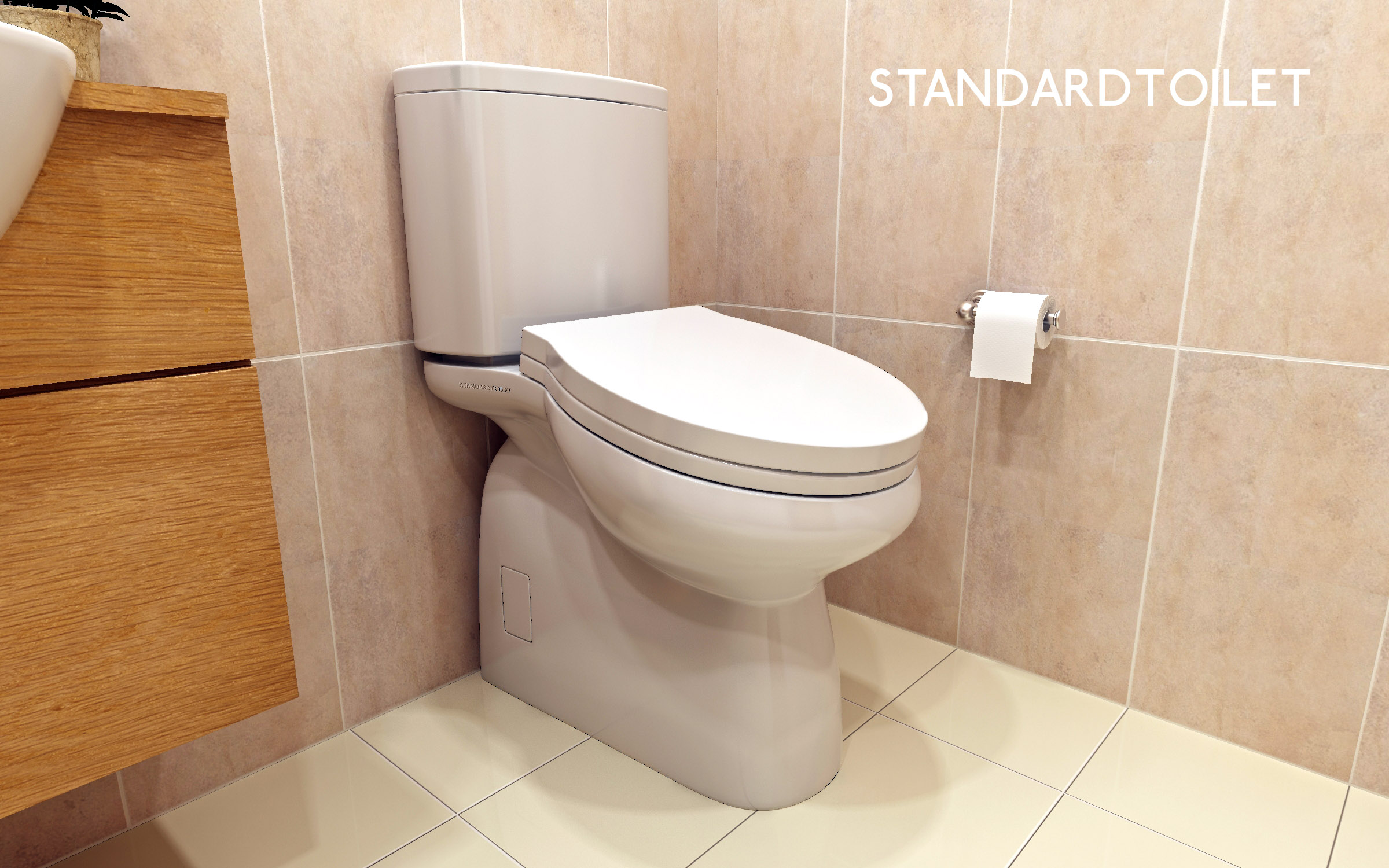
PRESS RELEASE:
“SLANTY” Innovation
in Toilet Design
www.standardtoilet.net
It is estimated that in the United Kingdom alone, extended employee breaks costs
industry and commerce an estimated £4 billion per annum. With the advent of flexible zero hour contracts
it is easy to see why our StandardToilet can be an asset to a business.
Our unique Patent Application, applicable both UK and worldwide, offers the ability to increase business efficiency and profits through reductions in social media usage.
The – Problems – with – modern – day – Toilets
Medical studies have suggested that it can cause swollen haemorrhoids and
weakening of pelvic muscles.
In modern times , the workplace toilet has become private texting and social
media usage space.
In commercial shopping malls and train stations, a requirement to reduce queuing
has become a necessity.
Innovation – Product Design
Health & Wellbeing
Medical studies have suggested that using the traditional WC can cause swollen
haemorrhoids and weakening of pelvic muscles. *
* NHS- UK Guidance Notes *Harvard Medical School
WALL MOUNTED MODEL WM1002 & WM 1004
Specification
- Easy to clean glazed ceramic
2. Soft Close toilet seat option
3. Water saving 3/6 Litre Dual Flush
4. Available in White/Grey
5. Suite includes concealed cistern
6. Specially designed slots in the rim allow for a more uniform, quieter flush
7. Ceramic is high-pressure cast, yielding a more uniform and consistent product
8. Easy sit on / get up design
9. Health Benefits – Reduction in haemorrhoids/musculoskeletal disorder
Reduce queuing
Current toilet seats provide a horizontal seating surface. This enables a user to sit
relatively comfortably on the toilet. As a result, a user may spend longer than
necessary sitting on the toilet without short-term discomfort. Sitting on a toilet for
longer than is necessary is generally undesirable.
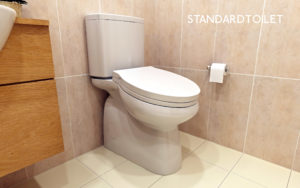
FLOOR MOUNTED MODEL FM 1001 & FM 1003
Specification
1. Easy to clean glazed ceramic
2. Soft Close toilet seat option
3. Water saving 3/6 Litre Dual Flush
4. Available in White/Grey
5. Cistern sits directly on the pan surface allowing the direct transfer of water
6. Specially designed slots in the rim allow for a more uniform, quieter flush
7. Ceramic is high-pressure cast, yielding a more uniform and consistent product
8. Easy sit on / get up design
9. Health Benefits – Reduction in haemorrhoids/musculo-skeletal disorder
Benefits to Disabled Toilet users: By using our uniquely designed WC, the time spent on the WC is considerably reduced, easing queuing congestion and benefitting by reduction in overspill usage
of disabled facilities.
Applications
Office & commercial buildings
Shopping malls
Public spaces
Motorway service stations
Pubs & restaurants
Sports events, theatre & concert halls
Seaside resorts
Patent Details:
Patent Attorneys – Swindell & Pearson Ltd
Swindell & Pearsons file No: RPL/SP/44435GB
United Kingdom Patent Application No. 1909327.7
Business case Details and
Contact Details:
Website: www.standardtoilet.net
Royal Society for Public Health (RSPH)
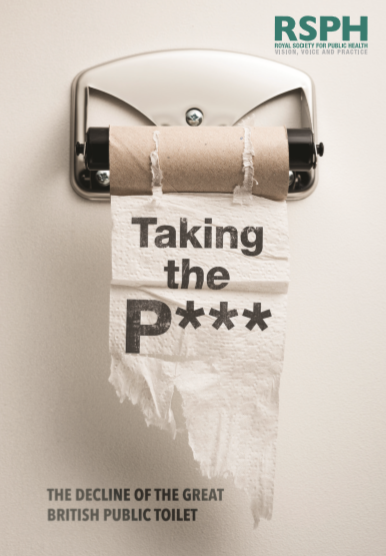

REPORT ON THE SERIOUS DECLINE OF PUBLIC TOILETS
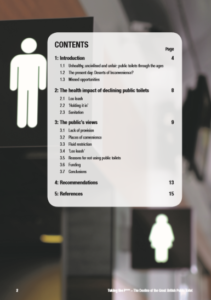

1: Introduction
1.1 Unhealthy, uncivilised and unfair: public toilets through the ages Provision of toilets outside the home dates back to ancient times, although the modern history of these facilities is from the late 19th century. Old-style toilets, often termed ‘nuisances’, drained directly into rivers or streets: these were removed from UK cities from the mid-19th century onwards. The problem for an increasingly mobile population was that such facilities, however unsatisfactory, were not usually replaced. The emphasis was on cleaning up the environment and there was little or no concern for the working classes lacking access to toilets. There was also an assumption that, with homes increasingly having toilets (albeit often outside or shared in poor communities), there would be natural progress in sanitation. The Great Exhibition of 1851 presented the public with flushable water closets that proved both popular and profitable, but a trial of the economic feasibility of public toilets by the Royal Society in 1852 made a large loss.
Nevertheless, the idea that public toilets could and should be profitable has persisted, associated with an implied assumption that these are optional luxuries, with no legislation requiring public toilets on the UK statute books. In a study of the heyday of public toilets at the turn of the last century, the most prominent block to provision was funding, as it is now.1 In the latter half of the 19th century a few public places, such as railway stations, installed toilets; but there were still no street facilities for women, and provision in workplaces was inconsistent – again with usually none for women. Prompted by lack of facilities and concerns about street urination, the 1880s onwards saw installation of public toilets in most UK cities, often with grand architectural design, celebrating the newly established improvements in plumbing and sewerage. Legislation was introduced for required provision in workplaces and schools, but not elsewhere.
Figure 1 – A former public toilet in Spitalfields, London, converted into a wine bar and put up for sale again in 2016 for £1 million.
During the first half of the 20th century, public toilets continued to increase in number, funded usually by local authorities (LAs). Some were free to use, but many required payment. The charge was one old penny until decimalisation of the currency in 1971, but usually there was a free cubicle for those without a penny to hand or to spare, a feature which has since disappeared.
In more recent decades the increasing pressure on LA budgets has led to the privatisation or closure of many public toilets. Sub-contracted or privately operated toilets make a charge, usually 50p or more. They tend to be located in highly frequented areas such as tourist spots and in general they have restricted opening hours. Legislation from the 1960’s banning turnstiles – on the basis that they are unfair to the disabled, as well as to those without money – has since been repealed to allow ‘pay to enter’ facilities. Where public toilets cannot be privatised, many have been sold off for other purposes or simply closed (Figure 1). Introduction of legislation to improve disabled access has had the unfortunate consequence in some cases of several public conveniences being replaced by just one disabled access toilet. On top of this, many of the required accessible toilets are not fit for purpose or are inconveniently located. Sporting venues are also poorly served, with particular problems for the disabled.
1.2 The present day:
Deserts of Inconvenience? According to a BBC report in 2016,3 local council cuts caused one in seven public toilets to be closed between 2010-13, the UK situation being described as “deserts of inconvenience” from “Wandsworth to Newcastle”. The report identified ten areas in England and Wales with no council-run public toilets at all. In a further BBC report in 2018,5 this loo absence had increased to 37 areas of the UK. This should come as no surprise given four out of five councils cut spending on public toilets between 2011 and 2016,3 a trend that shows no sign of reversing. While the few public toilets available do tend to be found more frequently in tourist areas, the shortage of ‘places to go’ for large groups has become a major concern for tourism, now a major income generator for the UK. Workers ‘on the move’, such as tourist guides, drivers of lorries or buses and postal workers, have often complained in vain of the lack of facilities.
Equality of access to toilets is an important factor, particularly for women who take longer and cannot use urinals. This leads to the long queues familiar in many public toilets (Figure 2). In a YouGov UK survey in 2017, 59% of women reported that they regularly queue for a toilet, compared with 11% of the men.7 Because of time consuming factors related to clothing, menstruation, and anatomical differences, a fair ratio of toilet provision would be at least 2:1 in favour of women. Calls to address this unfairness have led to ‘potty parity’ legislation in some US states and Canada,8 although not yet in the UK, where the British standard is still 1:1, despite a recommendation from the British Toilet Association for at least as many female cubicles as there are cubicles and urinals in male toilets.9 Equality of access includes the demands for ‘gender neutral’ toilets and the needs of transgender individuals.10
Local council cuts caused one in seven public toilets to be closed between 2010-13
In an age when previously shocking topics are readily discussed and aired in the media, there persists a reticence about either discussing public toilets or acknowledging the increasing problem of their absence. The most recent House of Commons public inquiry into toilets in 2008 referred to the taboo still surrounding the subject11 and this is further demonstrated by various euphemisms for these facilities, such as cloakrooms, rest rooms or conveniences. Low priority is given to planning and ensuring appropriate provision, and it is a great shame that the issue has been side-lined in this way. In fact, failure to provide public toilets has implications not just for sanitation and general convenience, but also for levels of social isolation and physical activity among certain groups, through restricting their ability to go outdoors.
UK public inquiries in this century have lamented the decline in public toilets,11,12 while coming up with few practical solutions, save for community toilet schemes, whereby local cafes and other establishments receive modest funding to allow people to use their toilets without having to buy anything. Such schemes are suitable mainly for individuals: while they undoubtedly add to the provision of facilities, they do not address the needs of groups, many of the disabled or most of the homeless.
Figure 2 – Women queuing at the Embankment public toilets, London These toilets were first erected in 1911 with the aim of reducing “nuisances committed in doorways and the public street”. There is now a charge for entry. Note no queue for the ‘Gents’ on the left side. Photo: R. Stanwell-Smith
[BBC, 2018] In 2010 there were 5,159 toilets run by major councils in the to 4,486 in 2018
1.3 Missed opportunities
While there have been some hard won improvements to policy and British Standards on toilets,13,14,15 Wales is the only part of the UK with a new Public Health Act requiring local authorities to publish a local toilets strategy for its area. The ‘Inconvenience Committee’ of professional tourist guides successfully campaigned for the large Unite Union to pass a demand for statutory provision of public toilets a decade ago, although this has yet to be acted upon.
A recommendation that all the new Crossrail stations in London should have accessible toilets has not yet been fulfilled, with the admission that some key points, such as the busy Bond Street station, will have no toilet facilities whatsoever. While in 2017 the Mayor of London announced that in the draft London plan, more public toilets will be provided for London’s diverse population,17 there has been no recent update on progress. The recent good news that some London stations will allow free access to the toilets within station precincts is welcome – but as yet there is no indication this will apply in all stations.
The international perspective on toilets focuses on the World Health Organisation’s goal of universal basic sanitation by 2030, and we must not forget that with most UK homes having at least one toilet, we are better off than many parts of the world. World Toilet Day (November 19th) is now a regular reminder of the 2.3 million people who lack access to a clean and safe toilet, an improvement on the 2.6 billion in this plight in 2010 but slow progress nonetheless. While the international priority therefore is directed to ensuring toilets within the home, in many regions people will only have access to public toilets in the foreseeable future, or no toilets at all. Even when most homes in the world have a toilet, there will still be a need for public facilities, just as there is in the UK.
Provision of toilets has been called “the barometer of civilisation” and the UK should continue to support the international efforts required – but also must address the current state of neglect for public toilets we see in this country today.
The Global Picture
2: The health impact of declining public toilets
2.1 Loo leash
Most of us need a public toilet occasionally, but this is a more urgent problem for those with medications or medical conditions causing increased frequency of the need for a toilet (such as diabetes, or bladder, bowel or prostate conditions). In addition to diagnosed conditions, advancing age increases the need, as does the requirement for nappy changing and young children who can’t wait. Knowledge of the lack of facilities nearby acts as a ‘loo leash’, deterring some from venturing far beyond their homes. It is deeply concerning that at a time when public health policy is to encourage outdoor exercise, partly to reduce obesity and also to keep our increasingly elderly population fit and engaged with the community, our declining public toilet provision is in fact encouraging more people to stay indoors.
2.2 ‘Holding it in’
Deliberate dehydration or ‘holding it in’ to reduce the need for a toilet is commonly practised by those who fear not being able to find a public loo, but this can seriously affect health and exacerbate existing medical problems such as cystitis (Figure 3). Water bottle refilling points have been installed in several places in the UK, but public toilets would provide an ideal location, with the advantage of frequent water flow to prevent stagnation and possible contamination, a problem that has rendered many old-style drinking fountains impossible to maintain hygienically.
2.3 Sanitation
The health impact of public toilet closures includes the problems of street urination and defecation. Bye-laws prohibiting public urination do not exist for over half the LA’s in the UK, and where they do they are rarely enforced. It is difficult to estimate the hygiene impact of this but it is insanitary to have contact with faeces or urine, the contamination not always being clearly visible. This is a particular risk to young children and wheelchair users. Add to this the lack of hand washing points, for people eating out of doors or when travelling, and you have the potential for contamination by pathogens causing individual illness or contributing to epidemics. In poor areas in the US, emergency installation of public toilets and washing facilities has been used to control outbreaks of dysentery and hepatitis, such as on Skid Row in Los Angeles.
Figure 3 – Health effects of deliberate dehydration
Health effects of deliberate dehydration
Weakness, dizziness, reduced physical performance, reduced short-term memory and other cognitive performance, depressed mood, less alert
constipation, cystitis, increased risk of renal stones and headache
3: The public’s views
In September 2018 a questionnaire survey was conducted for RSPH on what the public think about the decline in toilets, as well as ideas for how toilets could be funded, health implications, and access implications for women. Conducted by Populus, the survey included 2,089 UK adults aged 18 or over, with a standardised data base to represent factors such as income, gender, age and region.
3.1 Lack of provision
Given the rate of closures, it is unsurprising that 74% of people reported that there are not enough public toilets, with an increasing proportion by age
(Figure 4). There was some overall regional variation, with a range of 65% (E Midlands) to 82% in Wales and NW England. For those who need a toilet frequently due to illness or other condition (19% in this survey), the percentage reporting not enough public toilets was 85%. Regarding location of toilets, over 60% reported that there are insufficient public toilets in parks, although this figure was above 30% for other places, such as tourist areas and shopping centres (Figure 5). The majority of women and men in the survey (84% and 69% respectively) agreed there should be greater provision of toilets for women, although only 25% of the women and 30% of the men thought that toilets should be unisex to reduce queues. For the latter question there was an inverse relationship with age, with 38% of younger people (18-24 years) favouring the unisex toilet option, compared with 26% of those aged 65 years or more.
• Three in four (74%) of the public say that there are not enough toilets in their area
• One in five (20%) don’t feel able to go out as often as they like
• More than half of us (56%) restrict our fluid intake before going out to reduce the need to find a toilet
Not enough public toilets?
% by age group 100 80 60 40 20 0 18-24yrs 35-34yrs 35-44yrs 45-54yrs 55-64yrs 65yrs
Figure 4 – Percentage of responders by age who stated there are not enough public toilets
3.2: Places of convenience
When people in the survey could not find a public toilet, supermarkets were a popular option (70%), followed by cafés or restaurants (63%). A smaller proportion resorted to pubs, petrol stations and betting shops, but of greater concern was the 16% who use a back alley or bush, this percentage being higher for men and for those with a frequent need for a toilet (Figure 6). Seventy-one percent of women reported that they never did this, compared with 41% of the men. Nearly a third of all areas combined (29%) reported that street urination was a problem in their town; 45% reported this for the London area.
Where do we need more public toilets?
% survey
% respondents
0 10 20 30 40 50 60 70
MEN WOMEN
Figure 5 – ‘No’ responses to question about whether there are enough public toilets in particular locations.
Figure 6 – Percentage of men and women reporting use of a back alley or bush when no public toilet is available
Residential areas Tourist areas Shopping centres Bus stations Tube stations Railway stations Parks
80 70 60 50 40 30 20 10 0
Never Ever Several times/yr
% respondents 0 20 40 60 80
Figure 7 – Reasons given for not using a public toilet, by gender
Concerns re safety
Concerns re drug use
Cost of entry
Lack of loo paper
Smell bad
Often unclean
Women Men
% respondents
3.3: Fluid
Over half the public restrict fluid intake in case they can’t find a toilet. Fifty-six percent of survey respondents reported restricting fluid intake either occasionally or frequently, due to concern that they might not find a toilet. Eleven percent reported that they restricted fluids more than once a week, rising to 13% among women compared to 9% of men. The highest proportion by social grade was in the semi skilled/unskilled group, with 15% reporting that they had to do this regularly.
3.4: ‘Loo leash’
The term ‘loo leash,’ sometimes also called a ‘urinary leash,’ refers to being unable to stray far from home, in case no toilet can be found. Two in five (42%) respondents reported that they have restricted outings on this basis, including 4% who have to do this more than once a week.
Strikingly, one in five of the general public agreed that they are ‘not able to go out as often as [they] would like because of concerns around a lack of public toilets.’ For those with an illness or condition requiring more frequent toilet use, this figure rose to above two in five (43%). Altogether these are alarming statistics with regard to health impact, and not insignificant obstacles to wider attempts to curb obesity, increase fitness and reduce health inequalities.
3.5: Reasons for not using public toilets
Some public toilets are excellent, well maintained and with an attendant on duty. Sadly this is not always the case and reasons given for not using a public toilet included lack of cleanliness, bad smell or lack of toilet paper, cited more frequently by women. There were also concerns about safety, drug use and cost
(Figure 7). restriction
3.6: Funding
The running costs of public toilets, according to local authority and other reports, vary between around £15,000 and £60,000 a year, depending on factors such as size and staffing by attendants. In the survey we attempted to tease out some viable options for funding, given the majority response that there should be a lot more public toilets.
Despite the consensus about need, few want to pay for them from their own pockets. For example, 85% agreed that councils (LAs) should have “a legal responsibility to provide public toilets which are free to use for the public”, but only 34% agreed that this should be via raising council tax. Such a proposal would also be unworkable without significant changes to the funding environment, following years of central government cuts to local authority budgets.
Between 2010 and 2020, councils will have lost almost 60p out of every £1 the Government had provided for services [LGA, 2019]. Unsurprisingly, the least popular option for funding public toilets was by entry fees (30%), but none of the offered options proved universally popular, with the exception of advertising in toilets (78%).
Business or charity sponsorship (62%), a generous benefactor (60%) and state funding in tourist areas (67%) were favoured. While benefactors do occasionally come forward, for instance for the toilets in Bridport, Dorset, funded by a local business woman, this is not a sustainable funding model at scale. Nevertheless, given the shortage of national or LA funds for these ‘necessaries’, it may be possible to offer tax breaks or gift aiding schemes to encourage both companies and individuals to sponsor local public toilets schemes.
The idea of taking a penny from the price of a bus, train or tube ticket was favoured by 45% of the public, while a tax on cafés and bars had the support of just over half (51%). State funding of toilets in tourist areas is not a new idea and local funding of this type is used in other countries, such as the USA.
3.7: Conclusions
Public toilets should be considered as essential as streetlights, roads and waste collection, and equally well enforced by legislation and regulations. This is important for all countries: the huge task of improving global sanitation should not eclipse the need for public toilets. The lack of provision is affecting equality, mobility, physical fitness and other aspects of health. However, our survey also demonstrated a central problem – no one wants to pay for them. It is high time to consider potential solutions.
4: Recommendations
I. The Government to make the provision of public toilets compulsory on a well planned and regulated basis. The time is right to deal with the astonishing lack of legal action on public toilets provision, as a matter of urgency – and for all those for whom urgency of need has not been addressed. This could be done through minor amendments to existing ‘permissary’ legislation, for example the most recent Public Health Act (1936). Where cities such as London have included public toilets in their plans, it may be possible to offer help and publicity to ensure that these are followed through without further delays.
II. Potty Parity Alongside this, ‘potty parity’ laws (as exemplified in the US, Canada and elsewhere [NY Times, 2005]) should be emulated in the UK to ensure fair provision in all areas. Equality of access to toilets includes the need for more unisex facilities, more toilets for women, and taking into account the needs of transgender individuals.
III. The Government to reverse years of funding cuts to local authorities and invest in our civic infrastructure.
A crucial prerequisite for the introduction of such statutory requirements regarding public toilets is the adequate resourcing of local authorities by central government. Councils are undergoing a financial crisis as a result of years of chronic under-funding: analysis by the Local Government Association shows that local services will face a funding gap of £3.9 billion by 2019/2020, rising to £7.8 billion by 2024/25 [LGA, 2019]. A proper funding settlement for local authorities is vital for ensuring adequate levels of public toilets provision, as well as positively influencing many other upstream determinants of health. The Government should use the forthcoming Spending Review to reverse years of shortsighted funding cuts, and properly resource local authorities.
Council Passes a Bill to Shorten the Line at the Ladies’ Room, New York Times Nicholas Confessore, May 26, 2005, accessible https://www.nytimes.com/2005/05/26/nyregion/council-passes-a-bill-to-shorten-the-line-at-the-ladies-room.html
IV. National and local government to pilot innovative new ways of financing public toilets, including a “spend a penny” campaign.
Recognising that public inquiries have failed to identify public toilets as a state or local funding priority, other ways to raise money to pay for toilets should be urgently considered, such as: • ‘Spend a penny’ levies on travel – a one-penny drawn from the price of every train and bus ticket to finance public toilets in the local area. This approach could be tailored to different regions, but as a rough indication of what it could finance in the capital, taking a penny on every London bus and tube journey corresponds to nearly 700 fully funded facilities – more than 20 new public toilets for every borough. • Donations on purchases, building on the success of this tactic by some charities and the successful introduction of a charge for plastic bags. • Sponsored activities and events. • Tax breaks for major donations to build or sustain a public toilet. • More advertising and optional purchases within public toilets or nearby.
V. Break down the toilet taboo
The taboo in discussing the serious aspects of toilet provision should be tackled by raising the profile of the subject, for example: • A conference in collaboration with charities that have sought to publicise the ‘toilet problem’. • Inclusion of the issue in fund raising events such as Red Nose Day and sponsored activities for charity, with emphasis on the health and social impact of the lack of provision. • An architectural competition to design the best public toilet in the UK – a ‘convenience’ suitable for our times – which could also serve as a tourist attraction. • A competition to find the best toilet jokes or limericks, to be publicised along with the lack of public toilets. The toilet taboo has led to a lack of public debate on the importance of this population health issue, and the way it disproportionately disadvantages certain groups, such as older people, women, and those with existing health conditions. Public health organisations have a responsibility to ensure the health effects of declining provision are publicised more widely, and that public toilets are recognised for their potential role in assisting hygiene, hydration, mobility and exercise. • All strategies and reports on obesity or physical activity to include reference to or recommendations on the levels of public toilet provision in parks and public areas. • Health aspects of deliberate dehydration or inadequate provision for those with greater need should be highlighted in reports on health and disability.
1. Stanwell-Smith R. Necessary nuisances: public health and the public toilet in London 1890-1910. Dissertation for the Diploma in the History of Medicine, Worshipful Society of Apothecaries, June 2011. 2. Photo Clarke & Lloyds property consultants – sourced from https://www.standard.co.uk/news/london/ money-down-the-drain-expublic-toilet-on-sale-for1-million-in-spitalfields-a3158681.html (accessed 02.05.2019) 3. BBC news online. Public toilets ‘wiped out in parts of UK’. Online: https://www.bbc.co.uk/news/uk36405414 4. Frizzell N. UK Councils are selling off public toilets. We need a loo coup. The Guardian, Thursday 6 June 2016. available at https://www.theguardian.com/ commentisfree/2016/jun/02/councils-selling-publictoilets-loo-coup (20.05.19) 5. Jones L, Schraer R. BBC Reality check: public toilets mapped. 15 August 2018. Online: https://www.bbc. co.uk/news/uk-45009337 6. Truckers’ Toilets UK. Newsletter for lorry drivers produced by Gillian Kemp. www.facebook.com/ TTUKcampaign 7. Smith M. Potty parity: would it be fairer to make women’s toilets bigger? [YouGov survey December 2017]. https://yougov.co.uk/news/2018/03/20/pottyparity-would-it-be-fairer-make-womens-toilet/ 8. Anthony KH, Dufresne M. Potty parity in perspective: gender and family issues in planning and designing public rest rooms. Journal of Planning Literature 2007; 21(3): 267-294 https://yougov.co.uk/topics/ politics/articles-reports/2018/03/20/potty-paritywould-it-be-fairer-make-womens-toilet 9. Ratio of male to female toilets, 2012. https://www. northernarchitecture.us/sport-architecture/ratio-ofmale-to-female-toilets.html 10. Davis AK. The hidden privilege in ‘Potty Politics’. American Sociological Association 2017 https://journals.sagepub.com/ doi/10.1177/1536504217732051?icid=int.sjabstract.similar-articles.3
11. House of Commons Communities and Local Government Committee. The provision of public toilets. London: The Stationery Office Ltd. October 2008 https://publications.parliament.uk/pa/ cm200708/cmselect/cmcomloc/636/636.pdf 12. Greater London Authority. An urgent need: The state of London’s public toilets. The London Assembly Health and Public Services Committee, March 2006. No longer available online, see Update Report July 2011. http://www.btaloos.co.uk/wp-content/ uploads/2014/01/FINAL_HPS_public_toilets_update_ report.pdf 13. Greed C. Inclusive urban design: public toilets. 2003. Oxford: Architectural Press. 14. Barkley M, Greed C. British standards revisions: more toilets for women and better toilets for all. Bathroom Today 2006; 2:42-43 15. Greed C. Overcoming the factors inhibiting the mainstreaming of gender into spatial planning policy in the United Kingdom. Urban Studies 2005; 42(4): 719-49 16. Cunningham S. Public In-conveniences. A practical guide to improving standards. Update September 2018. Online: http://www.publicinconveniences.org. uk/authors-comments/ 17. 17th Mayor’s Report to the Assembly. December 2017, pp26-27. Online: https://www.london.gov.uk/ sites/default/files/17th_mayors_reportv2.pdf 18: NHS Inform, Symptoms of dehydration, available at https://www.nhsinform.scot/illnesses-andconditions/nutritional/dehydration#symptoms-ofdehydration (accessed 20.05.19)” 19: Water, Hydration, and Health, Barry M. Popkin, Kristen E. D’Anci, Irwin, H. Rosenberg; Nutr Rev. 2010 Aug; 68(8): 439–458 20. CBS news report 2017. Online: https://losangeles. cbslocal.com/2017/10/18/portable-restroomshepatitis-a-outbreak/ accessed 20.05.19 21. Approximation based on the upper estimate of facilities running costs of £60,000 per year, and TFL data on journeys per year (accessible at https:// www.london.gov.uk/sites/default/files/bus_network_ report_final.pdf and https://tfl.gov.uk/corporate/ about-tfl/what-we-do/london-underground)
5: References
This report was lead-authored by Dr Rosalind Stanwell-Smith, trustee of the Royal Society for Public Health and Honorary Senior Lecturer at the Centre for History in Public Health, London School of Hygiene and Tropical Medicine.
The Royal Society for Public Health
John Snow House,
59 Mansell Street,
London, E1 8AN
www.rsph.org.uk
May 2019
For more information, please contact Toby Green – tgreen@rsph.org.uk
© RSPH 2019 Charity Registration Number 1125949
Twitter: @R_S_P_H Facebook: Royal Society for Public Health LinkedIn: Royal Society for Public Health
Relief on Business Rates for Toilets
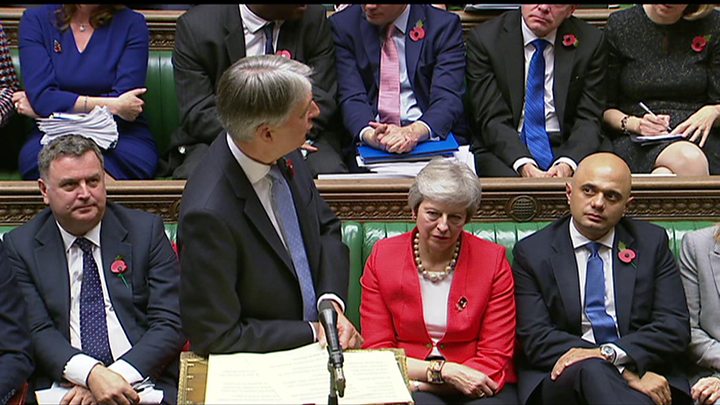
21 Months on and still no Bill to remove the Business Rates on Public Toilets
July 2020
The BTA continues to call on government to pass the legislation that has been agreed and supported by the House of Lords to remove the Non domestic rates levy from all Public toilets across the UK. The Bill was set before the Commons recently but was rejected or defferred by this conservative government as the Coronavirus pandemic was taking thier concentration.
No thought or understanding appears to have been given to the fact that the re,moval of these rates would have given Local Authorities some additional monies to fight the pandemic by affording them the flexibility to put in additional supplies of soap and/or sanitizer – particuarly when the pandemic was at ots PEAK !!
Hpw many more months wll we have to wait to see the conclusion of this greatly needed legislation and when will this govwrnment wake up to the fact that Public Toilets are a vital piece of infrastructure and an essential service provision for all the citizens of our nation travelling to and from work and play and even more vital to the hundreds of thousands of visitors to our country who bring revenue and a much needed boost to local economies.
NOVEMBER 2019
PURDAH !!
Having been almost obliterated by the PM when he dismissed parliament a few months ago – we have been fighting to get this bill re-instated by the ministers. Unfortunately, with the calling of a General Election next month then parliament immedaitely enters a PURDAH period where no business can be enacted until a new government is established. So we’re back to SQUARE 1 or half way down the SNAKE…..who will catch us.
CANCELLED due to the recent illegal proroguing of Parliament
Although the government has been re-instated and business is returing to normal (?) the disappointing news was received that many of the pieces of legislation going through the two houses had been “DROPPED”
Government had retained the bills relating to the 2022 Commenwealth Games and also HS2 — but decided to get rid of the other bills including Education, Disability and Public toilets.
The BTA has been in regular contact with representatives of the MHCLG and will continue to fight for the re-intaement of the Rates Reduction Bill – at its earliest opportunity — Notes to follow.
PREVIOUSLY REPORTED
29 October 2018
Budget 2018: Chancellor announced Business rates cut for public toilets
Owners will no longer pay business rates on public toilets, the chancellor announced.
The BTA has been campaigning for nearly ten years to get some RELIEF for organisations providing this vital service to everyone. We were delighted to hear the chancellor speech (jokes and all) as it brought with it an opportunity for providers and suppliers to put some added revenue into cleaning & maintenance activities.
Publicly accessible toilets are VITAL to our everyday activities and in addition to being a total necessity for many user groups and individuals with accessibility needs – parents with young children and supporting the dignity and well-being of older persons – they bring extended relief for our tourism industry, day-trippers and the growing numbers of mobile workers travelling throughout the UK.
Philip Hammond revealed the policy in his Budget speech, joking it was virtually the only announcement that had not been “leaked”. We’re hoping the news will cascade across the borders and Scotland, Wales and Northern Ireland governments will quickly follow suit.
The relief will apply to any standalone facilities available for public use, whether publicly or privately owned.
The British Toilet Association has estimated that 40% of public toilets have disappeared in the past decade.
More than 600 public toilets across the UK have stopped being maintained by councils since 2010 and in 37 areas major councils no longer run any, according to figures obtained by the BBC.
Details of that report are ccontained in a deperate POST on this website
Local authorities are not legally required to provide toilets, so they are often closed as councils look to cut costs. Public toilets have traditionally been liable for business rates in the same way as other non-domestic premises such as shops and offices. MPs groaned as Mr Hammond made a string of toilet jokes, including saying that local authorities could at last “relieve themselves”.
The chancellor also promised to help High Street shops by cutting business rates by a third for all retailers in England with a rateable value of £51,000 or less.
BBC Freedom of Information findings
Reality Check: Public toilets mapped
15 August 2018 by Lora Jones & Rachel Schraer BBC Reality Check
For travellers on their summer holidays, where to stop for a toilet break can be a source of worry. Public toilet provision has been declining for a number of years and the BBC has learnt that some UK high streets and tourist hot spots now no longer have any council-run public toilets.
At least 673 public toilets across the UK have stopped being maintained by major councils (unitary, borough, district and city) since 2010, according to figures obtained under the Freedom of Information law. In that time, the UK’s population has been increasing.
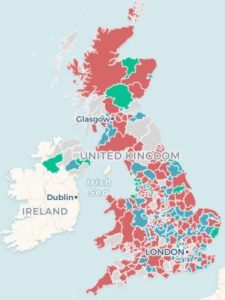
Change in the number of
council-run public toilets, 2010* to 2018
* Where no data for 2010 was available, data for subsequent years up to 2013 has been used instead. Source: BBC FOI requests.
![]()
Data supplied by 376 of the 430 councils contacted by the BBC showed that:
- UK councils stopped maintaining around 13% of public toilets between 2010 and 2018
- But this masks big regional variations – Cornwall Council has stopped maintaining 94% of its toilets, on the Isle of Wight it was 92% and 80% in North Ayrshire
- In 2018 there were 4,486 toilets run by major councils in the UK, down from 5,159 in 2010
- In 37 areas, major councils no longer run any public conveniences
- Highland Council maintains most public toilets (92), followed by Gwynedd (73) and Pembrokeshire (73)

Local authorities are not legally required to provide toilets, meaning they are often closed as councils look to cut costs. A Local Government Association representative said that, while councils were doing everything they could to keep public toilets open, substantial reductions to their budgets have meant they have had to make “tough choices” about public facilities.
The Department of Housing, Communities and Local Government says it encourages councils to keep toilets open to the public since they are a “valuable community amenity”. These findings do not mean there are no toilets available at all, however – in many cases larger councils are shifting responsibility to smaller parish or town councils. Others have been handed to community groups and paid for through fundraising while some councils are relying on the goodwill of businesses to make their toilets available to the public.
Andy McGuinness, campaign manager of Crohn’s and Colitis UK, claims handing the running of facilities over to parish councils in England is only a short-term fix, because it simply passes on the financial pressure. “It takes the upkeep off their books but it’s not sustainable. Parish councils will run them for a couple of years and eventually they’ll probably close anyway,” he said. He added that, without action from government and local authorities, the increasing closures of public toilets in England posed a “very real problem for the millions of people living with continence problems”.
Local councils (such as town and parish councils) get their money from a share of council tax.
Sue Baxter, who chairs the National Association of Local Councils, said smaller councils were increasingly taking over discretionary services such as toilets as budget pressures meant larger councils were finding them harder to provide. But, she said, they faced a dilemma – whether to allow toilets in their local area to close or take them on and face a hefty “toilet tax” in the form of business rates paid on the premises.
What are your rights?
- There is no particular right to access a toilet in publicand local authorities have no duty to provide them
- Businesses that provide toilets for their customers have no legal duty to do so for non-customers
- Workplacesmust provide suitable conveniences for their staff
- Anywhere that offers goods or services to the public must make sure disabled people have equal access to their facilities, including toilets

We asked the 50 councils with the biggest cuts how many had actually closed and how many had been handed over to smaller councils or other groups. Almost all of the 30 that responded had closed at least some, if not all, entirely. Only one council – East Northamptonshire – said its figures didn’t translate to any toilets actually being closed. Several had also handed the running of some toilets to private companies or community groups.
Raymond Martin, of the British Toilet Association, said providing toilets was a public health issue, but it was also about equality and social inclusion. He believes that, while councils have no legal requirement to provide access to public toilets, they do have a “moral responsibility”.
And charity Disability Rights UK says it has increasingly been receiving calls from disabled people reporting that accessible toilets are no longer available.
With these significant reductions in facilities, you might reasonably assume some people will resort to using their wider environment when caught short. So the BBC also asked councils and police forces whether they enforced any laws against public urination, and what had happened to numbers of offences in the same time period. We found that around the country, very few local councils or police forces take action against public urination. Those that do, however, use a range of tools including by-laws, public order offences specifically tackling public urination, and broader offences including indecent exposure, outraging the public decency, littering and harassment.
The London borough of Tower Hamlets, which had one of the biggest falls in the number of offences, said it has focused on “better enforcement” of the rules, which it said has acted as a deterrent. The council added that closures of pubs, clubs and bars had also contributed to the fall in offences.
Data supplied by 388 of 430 major councils and 39 out of 42 police forces in the UK covering the years 2010-2017 revealed that:
- 233 councils and force areas don’t have any by-laws prohibiting public urination
- Of the 180 forces and councils that had by-laws or public order offences against public urination, 112 said they hadn’t enforced them at all during this time period
- For those that did enforce rules against public urination, the number of times they were enforced had fallen in almost all areas
- In total, police forces and councils responding to the request recorded 15,297 offences relating to public urination in 2018, more than halving from 32,668 in 2010
- Where police forces did use public order offences, the numbers were small – fewer than 10 offences in any given year
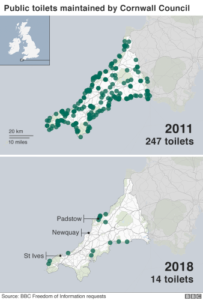
Cornwall’s unitary council saw the number of public toilets it maintains drop over the past five years, from 253 in 2013 to only 14. Over the same time, overall expenditure on toilets was all but wiped out, falling from £4.3m to only £217,000. A council representative said: “We recognise that public toilets are important to residents and visitors alike – but with huge cuts in funding by central government we have been forced, like other local authorities, to review the non-statutory services we provide. “We have now successfully transferred the ownership or management of over 200 public toilets to local city, town and parish councils and local community organisations and businesses. “Only 16 toilets have closed to date.” The council has also started charging for the remaining toilets it runs.
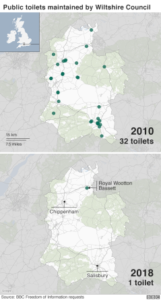
Wiltshire Council now runs only one public toilet on its streets, and another five at park-and-ride sites, in comparison with 32 in 2010.
The council saw its spending on toilets cut by more than £100,000 between the 2016 and 2017 financial years. It said 22 of the toilets were transferred to the control of town and parish councils, and the rest have closed. “We carried out a public consultation exercise in 2015 and the overwhelming response was facilities should be offered to the town and parish councils to run if they felt it was appropriate.”
One of the biggest spenders is the City of London Council. It spent £992,000 on running four public toilets in 2017. In 2010, it spent £1,029,000 on double the number of conveniences. When contacted by BBC News, the council did not comment on why expenditure had remained relatively flat.
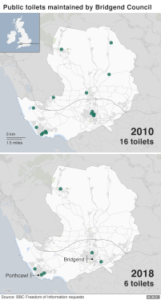
New Forest District Council followed, with an overall expenditure of £877,660 on 24 public toilets and refurbishment work in 2017.
Bridgend County Borough Council in Wales now maintains only six public toilets, down from 16 in 2010. It said that three more toilets were likely to close in the next year, unless they are taken on by town councils, because of budget reductions.
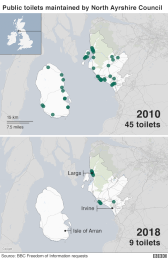
Meanwhile in North Ayrshire, there has been a fall from 45 in 2010 to nine in 2018. The council says five of these were transferred into community ownership and paid for through fundraising, while the rest closed outright.
In Northern Ireland, eight local councils either increased or maintained the same number of public toilets between 2010 and 2018. Fermanagh and Omagh District Council had the highest number of council-run conveniences at 51 in 2018.
Illustrations by Katie Horwich. Maps by Ed Lowther and Prina Shah.
MUSCULAR DYSTROPHY UK

Muscular Dystrophy UK is a charity for the 70,000 people living with muscle-wasting conditions in the UK, many of whom need access to Changing Places toilets. The charity brings together people affected by more than 60 rare and very rare progressive muscle-weakening and wasting conditions. Since 1959, the charity has been supporting families living with muscle-wasting conditions. They provide vital information, advice, resources and support for people with muscle-wasting conditions, their families and the professionals who work with them.
Since November 2017 Muscular Dystrophy UK have been co-chairs of Changing Places Consortium alongside PAMIS.
For further information please contact:
Clare Lucas
Muscular Dystrophy UK,
61A Great Suffolk Street,
London
SE1 0BU
Tel: 020 7803 4838
http://www.musculardystrophyuk.org/
working in partnership with

Dundee
DD1 4JE

Centre for Accessible Environments
Holyer House
20-21 Red Lion Court
London, EC4A 3EB
EMail: info@cae.org.uk
Telephone: 020 7822 8232

£2m for Changing Places Toilets in Motorway Service Aeras
Government investment of £2million for Changing Places toilets at motorway service stations
Today, the Department for Transport has launched its Inclusive Transport Strategy.




